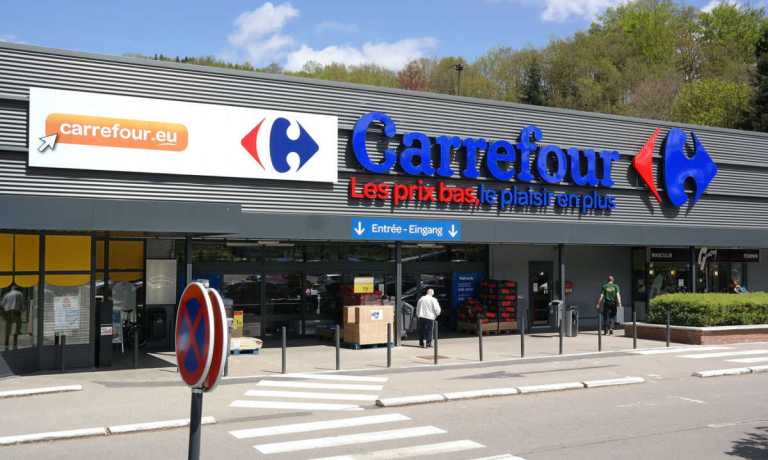Carrefour’s ChatGPT-generated video comes as grocers worldwide leverage AI to improve their labor economics.
The multinational grocery giant, which has nearly 14,000 stores across more than 30 countries, is leveraging the chatbot and a computer-generated human avatar to reduce the labor cost of creating customer-facing videos.
In a recent LinkedIn post, Elodie Perthuisot, the retailer’s chief eCommerce, digital transformation and data officer, shared the first video the company made with a ChatGPT-created script and an ultra-realistic human-looking avatar generated by artificial intelligence (AI). The video models an FAQ-style explainer; in this first example, the avatar offers advice on how to purchase healthier and less expensive foods via the grocer’s site.
“Our data and innovation teams are currently working on the use cases of ChatGPT, and generative AI in general,” Perthuisot wrote, auto translated from the original French by LinkedIn. “We explore [the technology with our] customers [and] how to better serve them [as our guiding principle].”
The news comes as grocers increasingly turn to AI to reduce their labor needs across different parts of their business. For example, major United States grocer Kroger is automating its inventory processes in partnership with tech behemoth Google. Google Cloud and Deloitte announced last month that, in partnership with the grocery chain, they have collaborated on a task management application, which provides information on shelf-stocking and inventory among other matters, and a store management app.
“Technology and digital tools are fundamental elements of how Kroger continues to improve the associate experience, which in turn, enhances the in-store experience for our customers,” Kroger Vice President of Enterprise Retail Systems Jim Clendenen said in a press release. “Google Cloud and Deloitte brought us a technology architecture and application framework that we could implement in record time. We’re already seeing results.”
Advertisement: Scroll to Continue
According to research from PYMNTS’ study “Decoding Customer Affinity: The Customer Loyalty to Merchants Survey 2022,” created in collaboration with Toshiba Global Commerce Solutions, which drew from a survey of more than 2,000 United States consumers, 51% of shoppers said ensuring that the grocery products they want are in stock and available for purchase is key to ensuring their continued patronage of a given merchant.
Another key way that AI is being used in the grocery store is in the checkout process, with grocers around the world implementing smart carts and Just Walk Out-style systems.
In an interview with PYMNTS, Jordan Fisher, CEO of autonomous retail technology company Standard AI, which this month announced the acquisition of self-checkout kiosk creator Skip, asserted that, to drive adoption of this kind of AI-powered checkout, grocers will need to present consumers with a range of options, such that they can try it out on their own terms.
“I think hybrid is the way forward,” he said. “If you imagine 10 years ago, when self-checkout was really starting to be deployed, if [retailers] had just said, ‘OK, it’s self-checkout everywhere — 100% has to be through self-checkout,’ it would have been a disaster. [You] need that hybrid, and we’re seeing the same thing with autonomous.”

